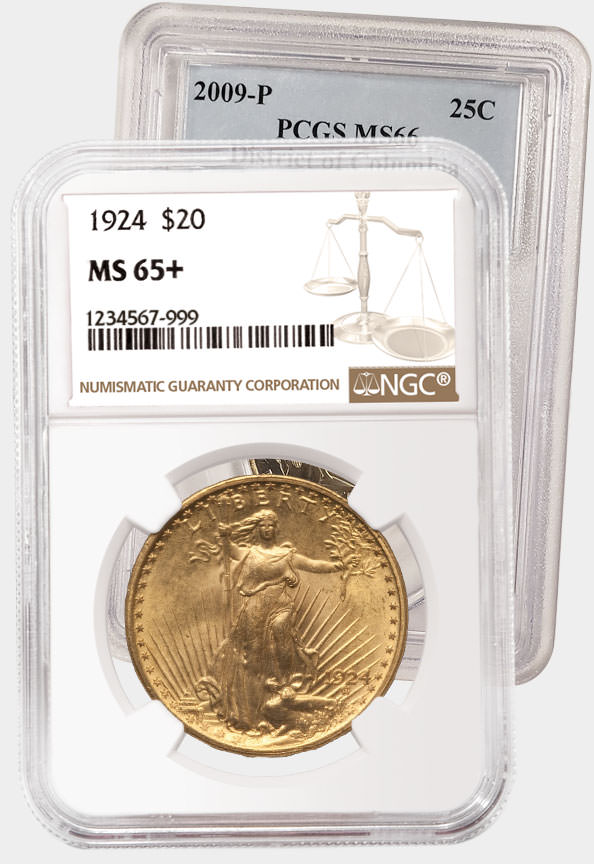NCS Conservation: July Highlights
Posted on 7/14/2020
Numismatic Conservation Services™ (NCS®) uses a variety of proprietary techniques to remove harmful surface contaminants, stabilize and protect a coin's surfaces and, in many cases, improve a coin's eye appeal. After coins are conserved by NCS, they are seamlessly transferred to Numismatic Guaranty Corporation® (NGC®), an independent affiliate of NCS, for grading and encapsulation.
Below are a few highlights of coins that were conserved by NCS and graded by NGC recently.
A hardened reddish-brown residue is occasionally found on gold coins, especially those which have been circulated. This 1863-S $20 was recently submitted to NCS to address the thick reddish-brown residues that had materialized on a large part of the obverse. Too often coins will be submitted for conservation where amateur attempts to remove similar residues has led to permanent damage to the coin surface. This Civil War era piece luckily arrived without such amateur attempts. Through careful conservation, the residues were lifted safely from the surface. Following professional conservation, this circulated coin was able to grade with NGC.
Decades of poor storage conditions often lead to the development of ugly residues. Never intended for circulation, this Proof 1870 Silver 3 Cent struck in copper was a pattern piece in a design never utilized. As a special piece, it evidently spent many decades in a collection, though likely in less-than-ideal storage conditions. Most notable is the development of a hazy residue obscuring the mirror of the Proof fields. Special coins such as this pattern must be carefully conserved to remove the residues without damaging the coin surface beneath. Following careful conservation, this coin was able to grade very well with NGC.
The presence of a thick green residue on a silver coin is almost always a clear indication of long-term storage in a container containing PVC, most likely in the form of the soft flip. This 1926-S Oregon Trail Half Dollar commemorative was submitted to NCS to address the large areas of opaque green residue hiding the luster of the coin beneath. The NCS conservators have developed techniques to remove such thick residues without harming the surface underneath. Residues such as PVC can damage a coin irreparably, but fortunately this piece was submitted to NCS before any permanent damage took place. Following conservation work, this commemorative was able to grade very well with NGC.
For more information about NCS, visit NGCcoin.com/NCS.
Stay Informed
Want news like this delivered to your inbox once a month? Subscribe to the free NGC eNewsletter today!












